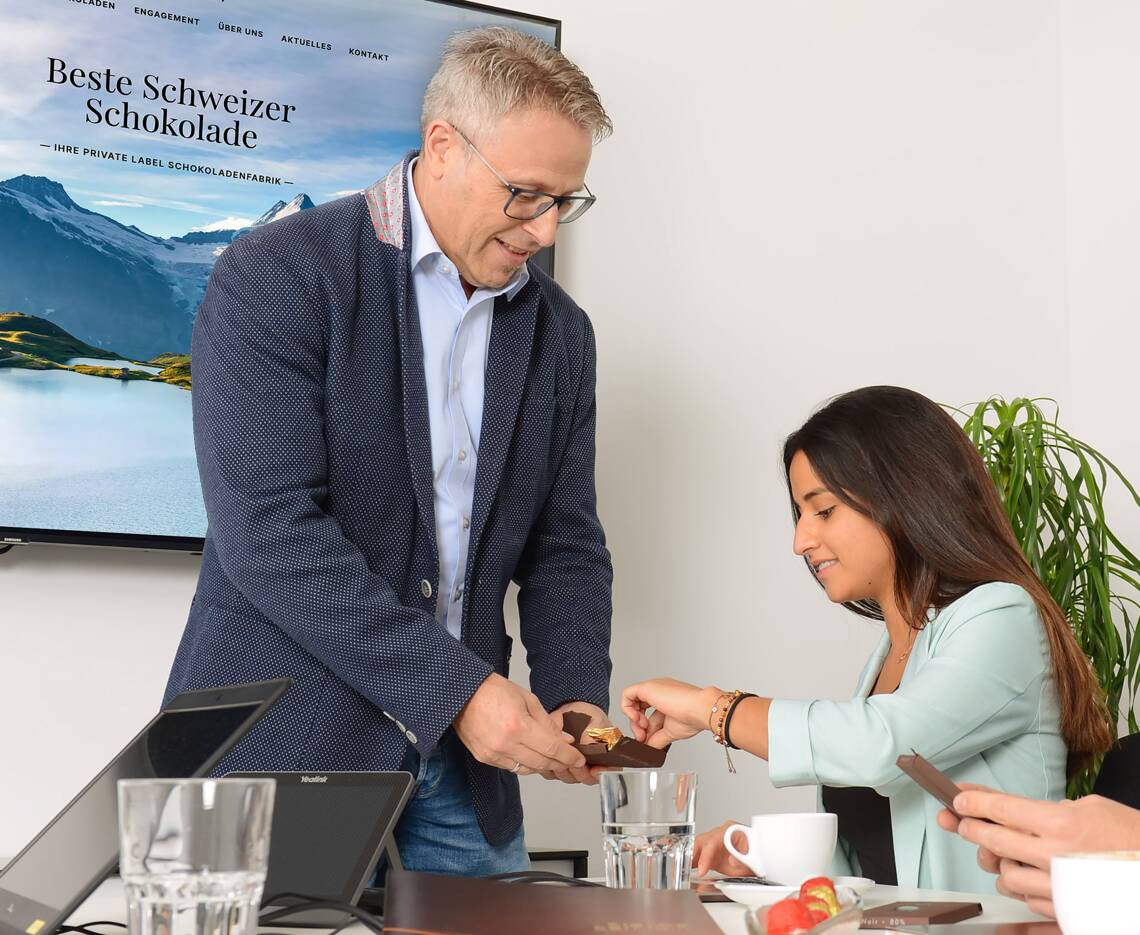Project "Cocoa, Trees & Climate Action": Visit and agroforestry workshop
In July, Manuel Holzer, our Sustainability Manager and project coordinator, visited the farmers involved in the project "Cocoa, Trees & Climate Action" in San Martín, Peru. He first participated in the Agroforestry workshop we organized with the Choba Choba Foundation in Santa Rosa, located in the Alto Huayabamba Valley at their home base. After the workshop, he visited the three key communities—San Juan de Shitari, Huicungo, and Bagazan—which are central to the project.
On Saturday morning, around 7 a.m., we met with about 15 farmers in Juanjuí, from where we took a boat up the Huayabamba River to Santa Rosa, where the cocoa fields of Choba Choba are located. Since many farmers have other jobs and work during the week, workshops typically take place over the weekend in their free time.
Unfortunately, some farmers could not join us because they needed to stay in their fields to guard against cocoa fruit theft, as the region faces increased risk due to high cocoa market prices.
The workshop was a blend of theoretical inputs, hands on exercises. We had the opportunity to visit several agroforestry plots established by farmers in the alto Huayabamba a few years ago. This allowed the Norandino-farmers to see how the system looks after some time and they had the possibility to exchange experiences with those who have already implemented agroforestry. In that way theory and practice were well connected.
During the workshop, we learned, among other things:
-
About different tree species suitable for cocoa plantations and their life cycles in an agroforestry system (AFS).
-
The importance of soil cover and organic matter for water conservation.
-
How to manage, climb, and prune shade trees to maximize the potential of AFS.
-
Techniques for measuring water infiltration into soils.
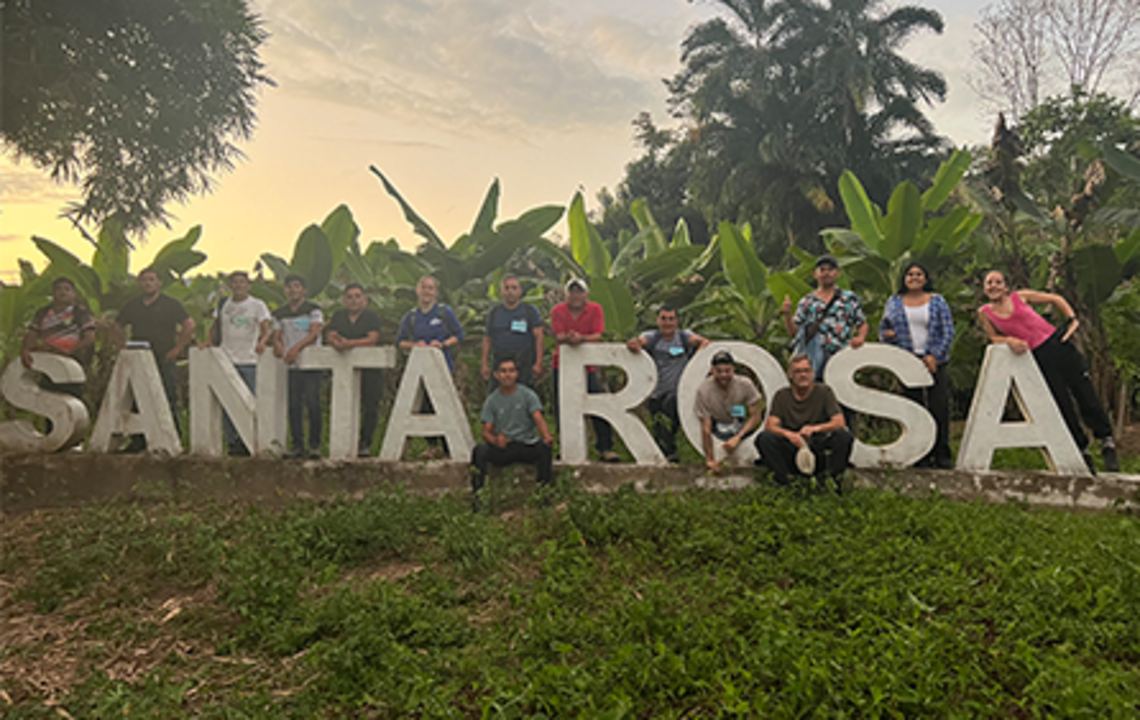
In Santa Rosa with Norandino Farmers and the technical team of Choba Choba.
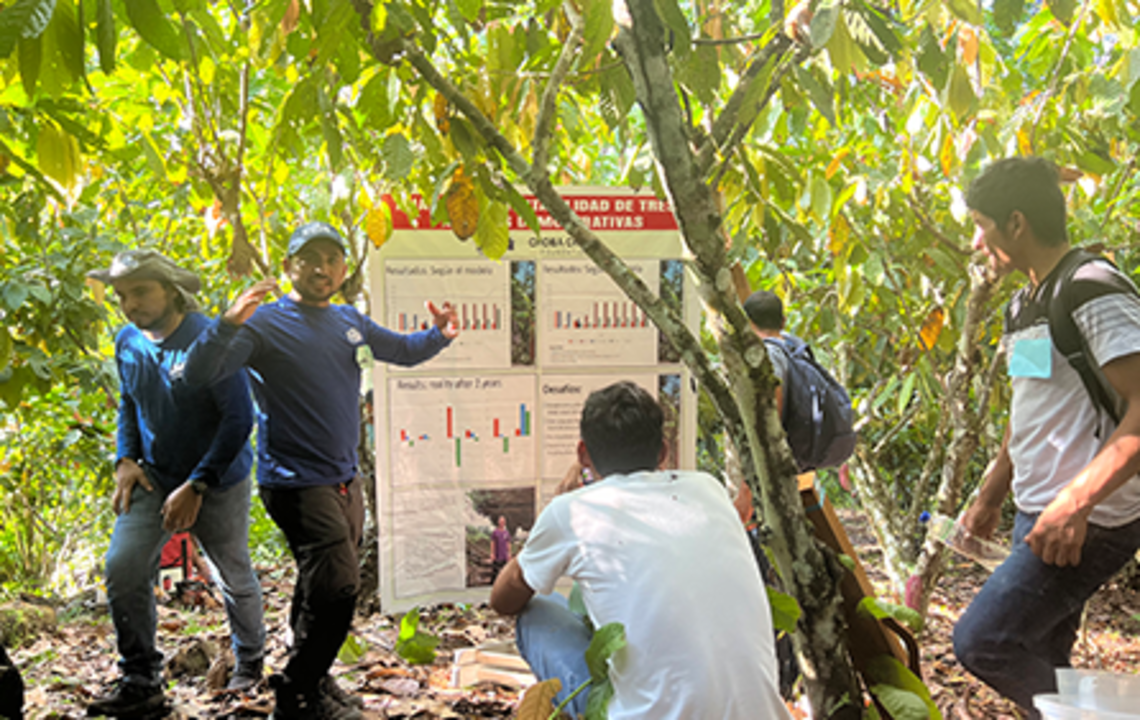
Field school. Field technician and project manager Gabriel Aguilar Pastor explains the economic advantages and challenges of agroforestry system.
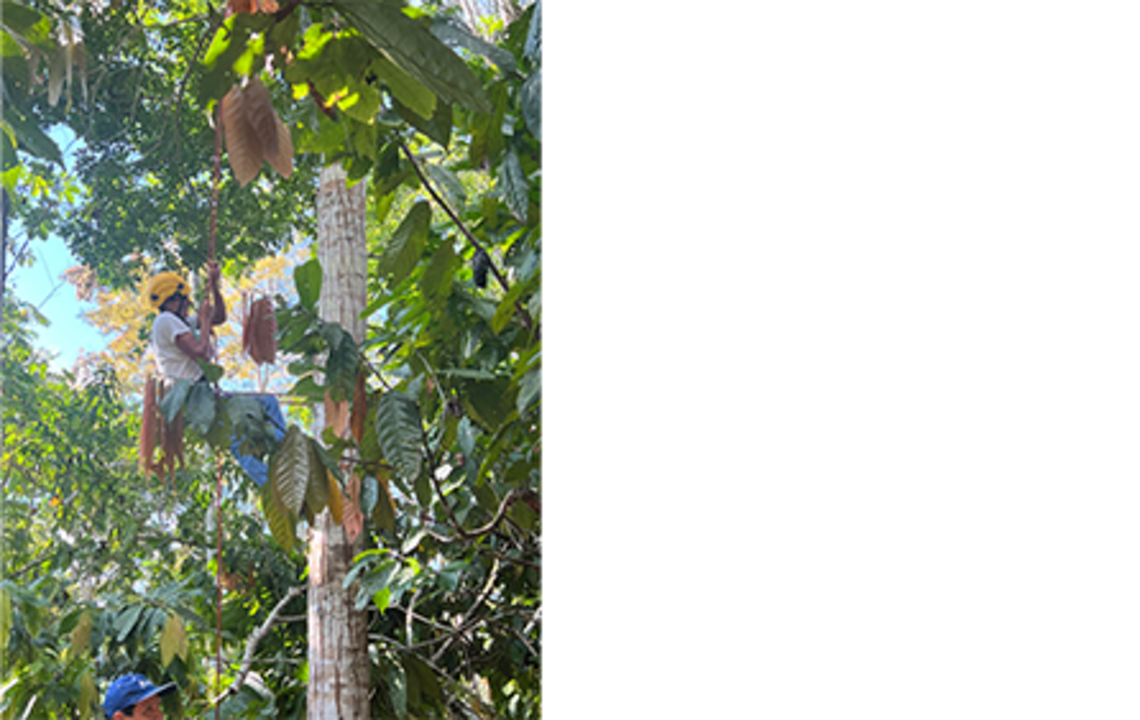
First climbing experience. A necessity for shade tree pruning.
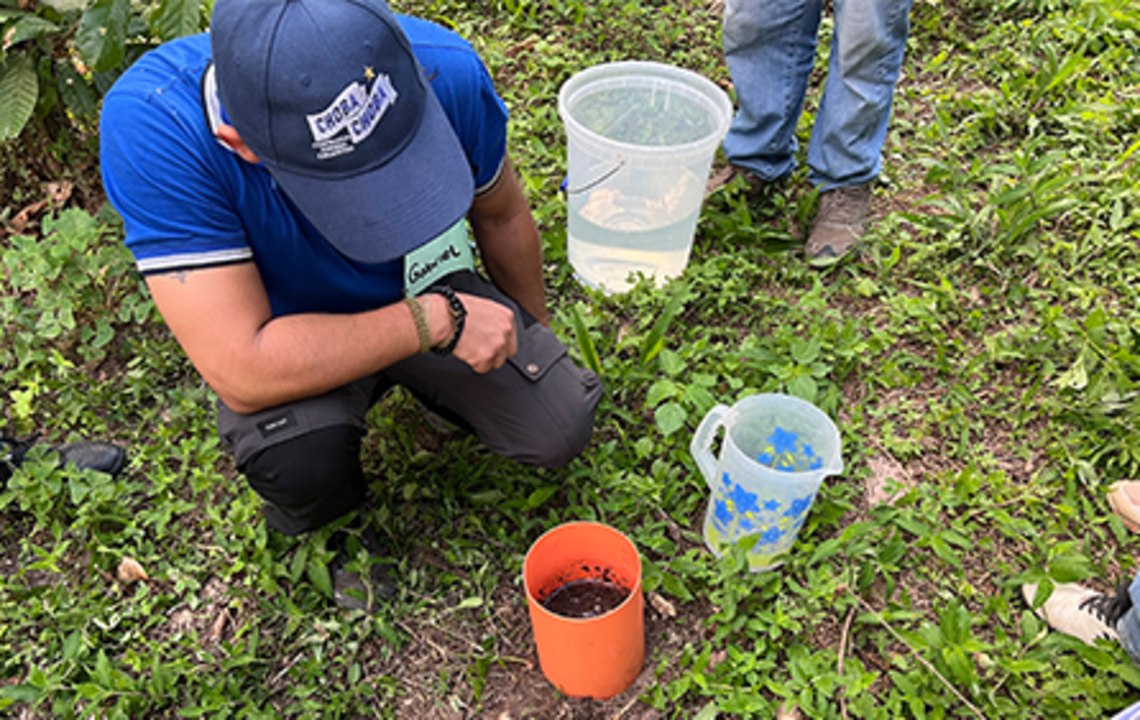
Water infiltration test to better understand the soil properties. An important rule of thumb: the more organic material the higher the water storage capacity of a soil.
Building the basis for planting shade trees
After the workshop, we visited farmers in the communities of San Juan de Shitari, Bagazan, and Huicungo, where they have begun constructing tree nurseries to cultivate forest and fruit trees as part of diversifying their production systems. In San Juan de Shitari, even the school is involved in the project, having set up an extra nursery to practically incorporate the topics of reforestation, biodiversity, and climate resilience into their education curriculum. Part of the school premises will be reforested.
Some farmers have already planted a few shade trees in their fields, and many are convinced that AFS is the way forward to adapt to and mitigate climate change.
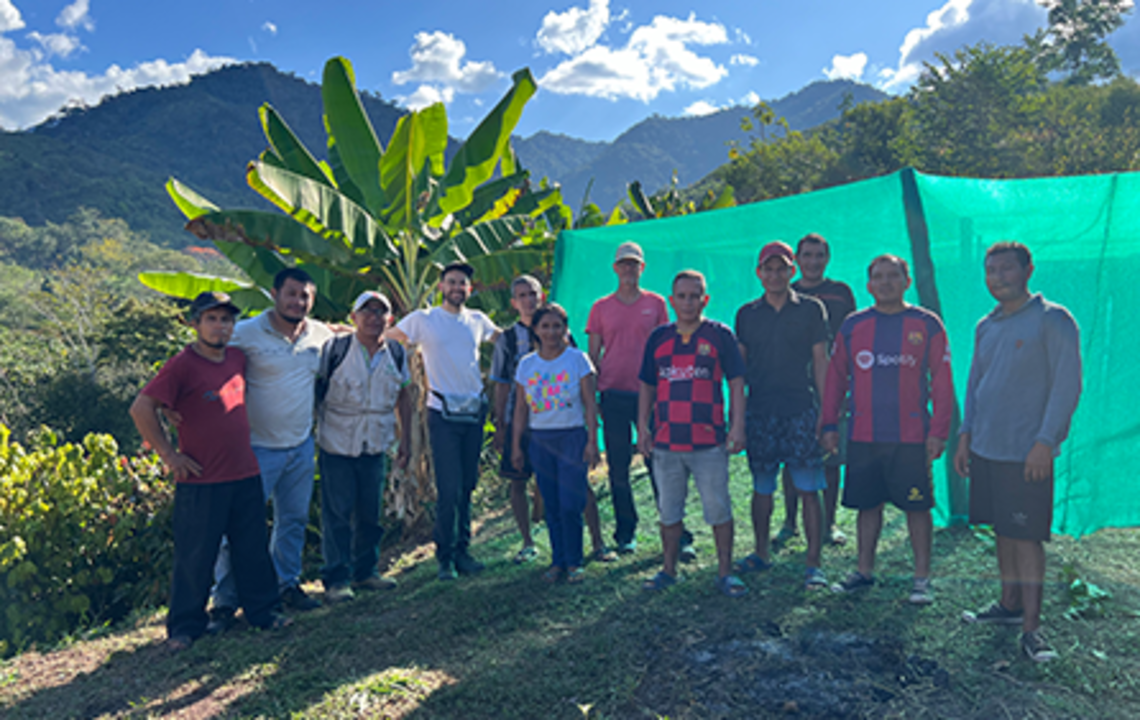
The project-farmers in San Juan de Shitari in front of the finished nurser.
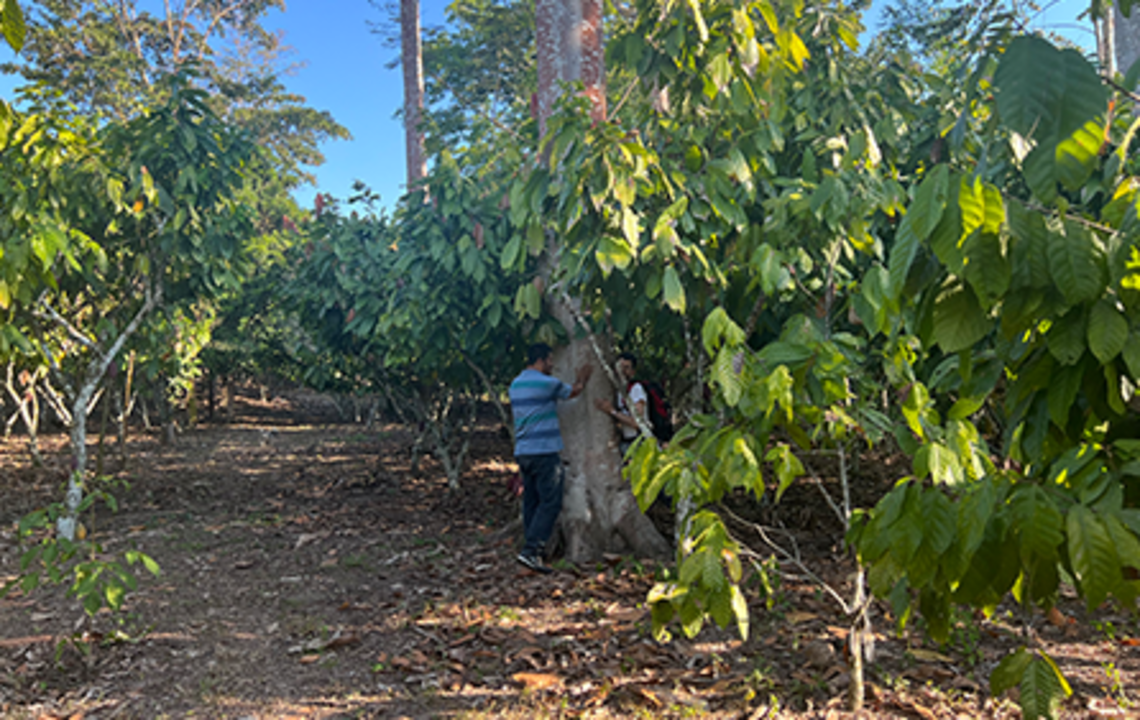
Some farmers have already planted a few shade trees and are eager to develop to more diversified agroforestry systems.
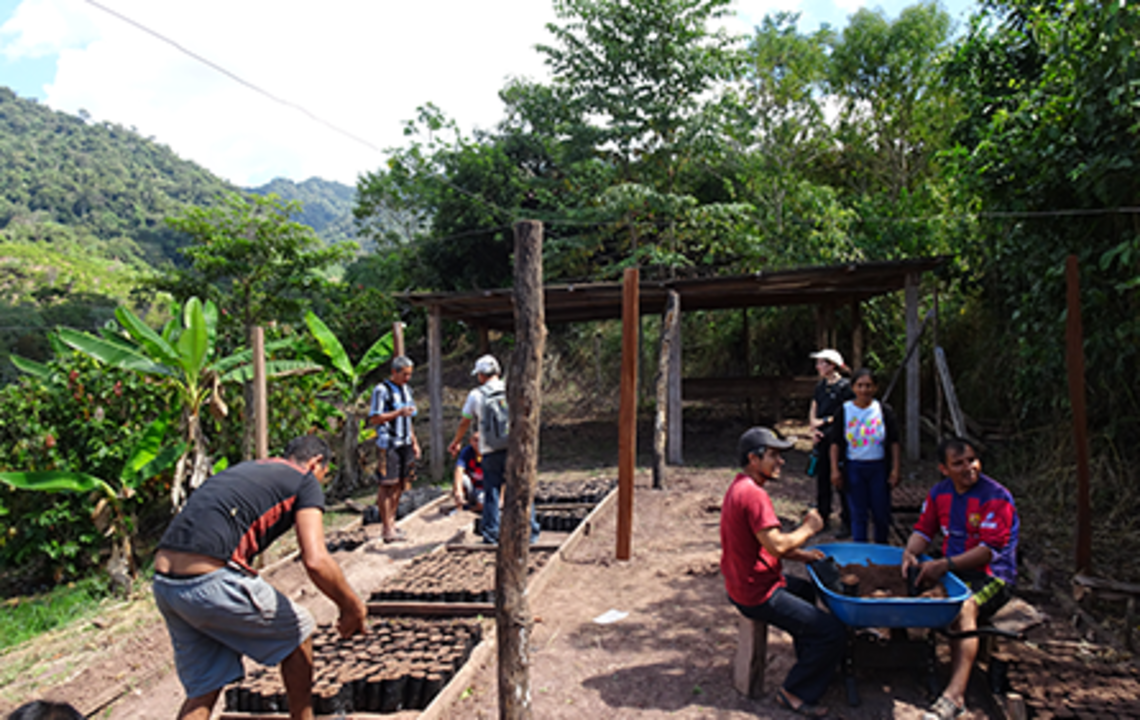
Working on filling the bags to grow
the treeseedlings.

Author:
Manuel Holzer
Head of Sustainability

